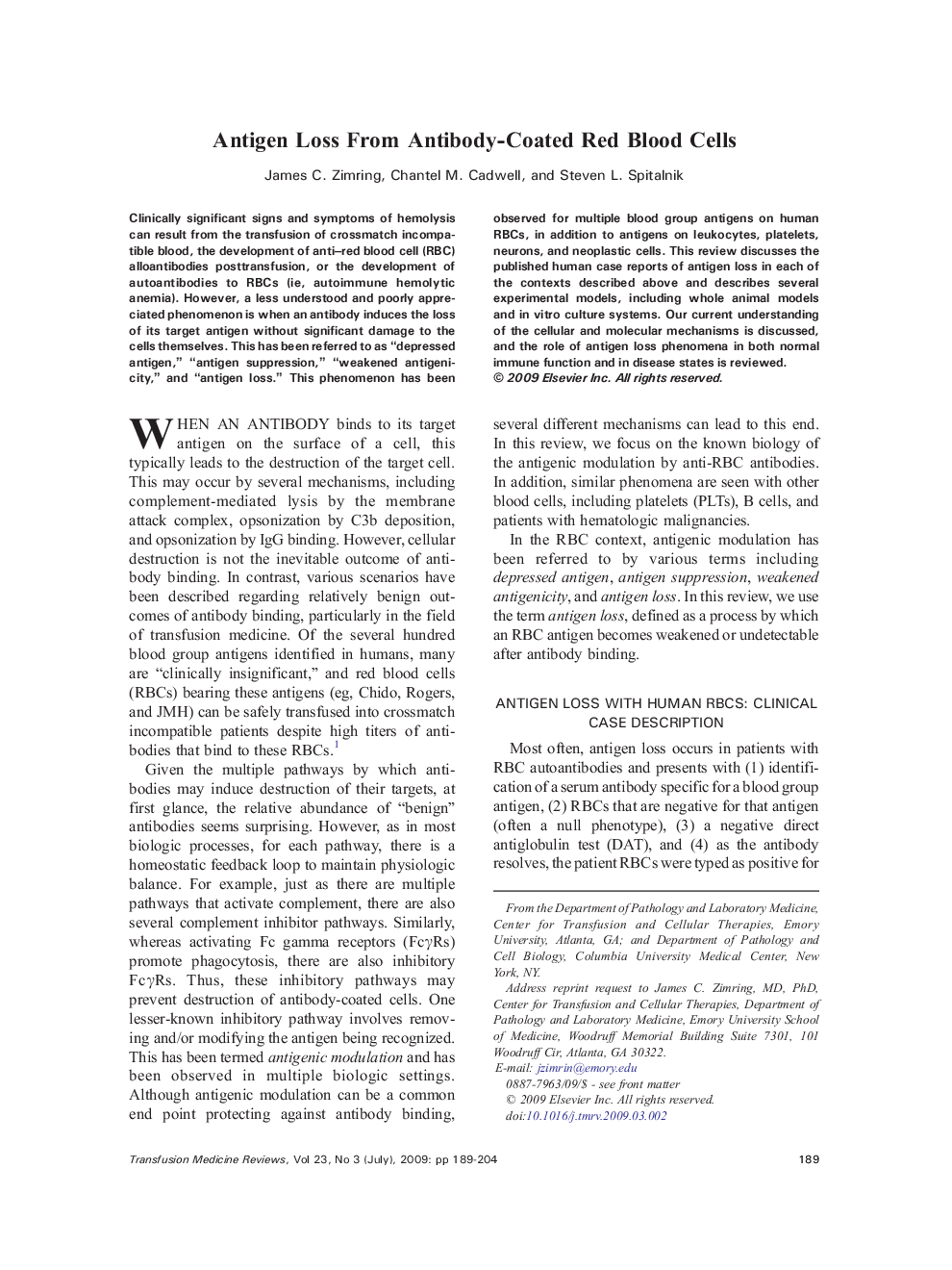| Article ID | Journal | Published Year | Pages | File Type |
|---|---|---|---|---|
| 3336994 | Transfusion Medicine Reviews | 2009 | 16 Pages |
Clinically significant signs and symptoms of hemolysis can result from the transfusion of crossmatch incompatible blood, the development of anti–red blood cell (RBC) alloantibodies posttransfusion, or the development of autoantibodies to RBCs (ie, autoimmune hemolytic anemia). However, a less understood and poorly appreciated phenomenon is when an antibody induces the loss of its target antigen without significant damage to the cells themselves. This has been referred to as “depressed antigen,” “antigen suppression,” “weakened antigenicity,” and “antigen loss.” This phenomenon has been observed for multiple blood group antigens on human RBCs, in addition to antigens on leukocytes, platelets, neurons, and neoplastic cells. This review discusses the published human case reports of antigen loss in each of the contexts described above and describes several experimental models, including whole animal models and in vitro culture systems. Our current understanding of the cellular and molecular mechanisms is discussed, and the role of antigen loss phenomena in both normal immune function and in disease states is reviewed.
